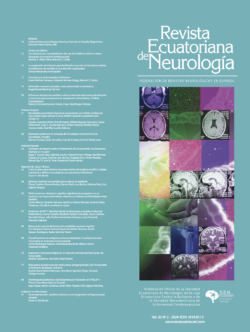Artículo original
Características Clínicas de Pacientes Hipertensos hospitalizados con y sin Enfermedad Cerebrovascular de 60 a 90 años en Quito, Ecuador: Estudio de Casos y Controles. Clinical Characteristics of hospitalized Hypertensive Patients with and without Stroke aged 60 to 90 years in Quito, Ecuador: A Case-Control Study.
Autor: Carlos A. Moncayo-Velásquez, Paúl A. Calixto-Ruiz, Marcos Serrano-DueñasRev. Ecuat. Neurol. VOL 33 Nº3, 2024
Antecedentes: La enfermedad cerebrovascular ocupa el segundo lugar en el mundo como causa de muerte por enfermedad y de años vividos con discapacidad. La inversión destinada al manejo de un paciente hospitalizado por ictus genera altos costos en salud. En Ecuador representa la tercera causa de defunciones. Uno de los factores más importantes para desarrollarla es la hipertensión arterial. Este grupo de pacientes presenta elevado riesgo de complicaciones, mortalidad y mal pronóstico.
Objetivo: Identificar cuáles variables difieren entre pacientes hipertensos con ictus frente a hipertensos sin ictus, ingresados en el Hospital General San Francisco de Quito, Ecuador, durante el periodo 2017- 2020.
Métodos: En una población de 96 casos y 57 controles se efectuó un estudio analítico de cohorte retrospectivo entre casos y controles.
Resultados: La variable escolaridad (Primaria Completa) fue la más afectada entre los casos (χ²=13,298; p=0,039). Los pacientes con fibrilación auricular fueron significativamente mayores en los casos (χ²=7,31 p=0,007). Otras variables como: sexo, edad, procedencia, años con hipertensión, tabaco, diabetes mellitus tipo 2, insuficiencia cardíaca, hipercolesterolemia y terapia anticoagulante, no demostraron diferencias significativas entre ambos grupos.
Conclusiones: Los pacientes con escolaridad primaria completa y la fibrilación auricular tuvieron presencia significativa en los hipertensos con ictus.
Background: Stroke is the world’s second leading cause of death from disease, and disability-adjusted life years. The investment in management of a hospitalized stroke patient generates a high healthcare cost. In Ecuador it is the third leading cause of death. Hypertension is one of the most important factors in the stroke development. Patients with high blood pressure and stroke have a higher risk of complications, mortality and poor prognosis.
Objective: The present study aimed to identify which variables differ between hypertensive patients with stroke versus hypertensive patients without stroke, hospitalized, during 2017- 2020.
Methods: In a population of 96 cases and 57 controls, a retrospective analytical cohort study between two groups of patients was conducted.
Results: The variable education (primary education) was the most affected among cases (χ²=13.298; p=0.039). Patients with atrial fibrillation were significantly higher in the case group (χ²=7.31 p=0.007). Other variables like: sex, age, provenance, years lived with hypertension, smoking, type 2 diabetes mellitus, heart failure, hypercholesterolemia and anticoagulant therapy, showed no significant difference between the two groups.
Conclusions: Patients with complete primary education and atrial fibrillation had significant presence in hypertensive patients with stroke.





